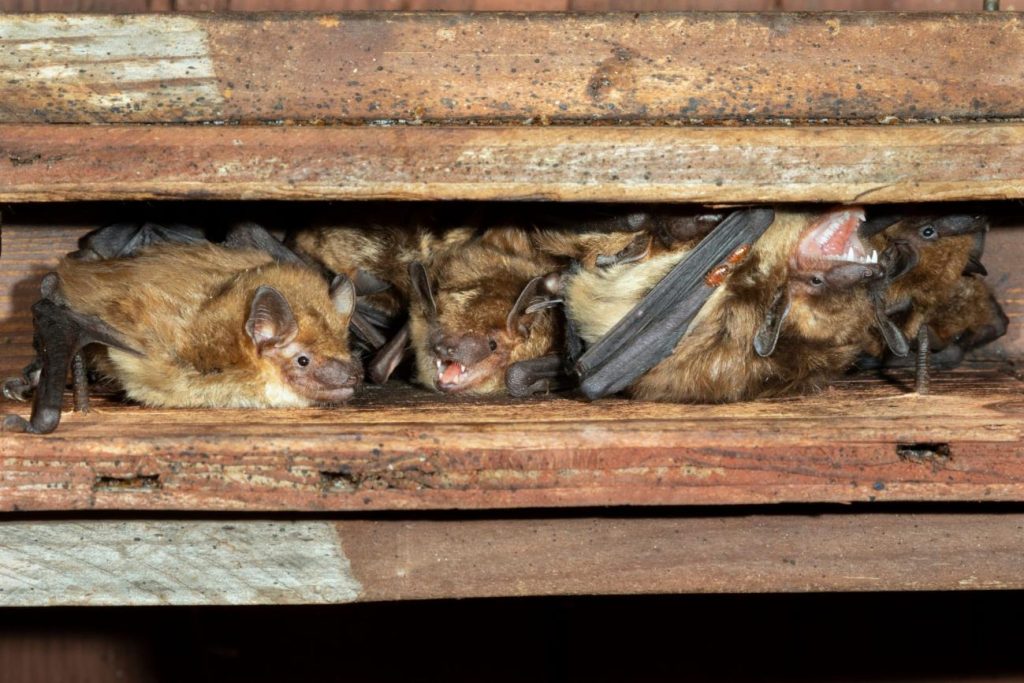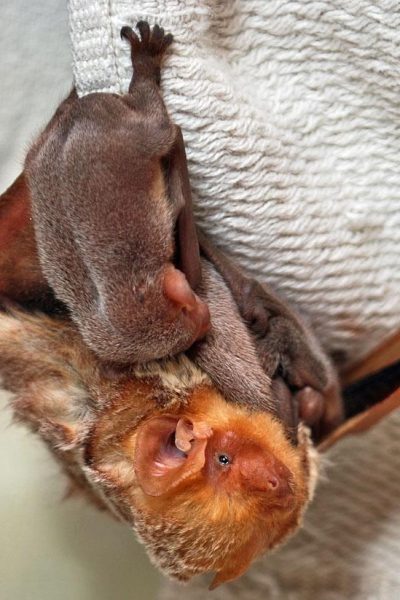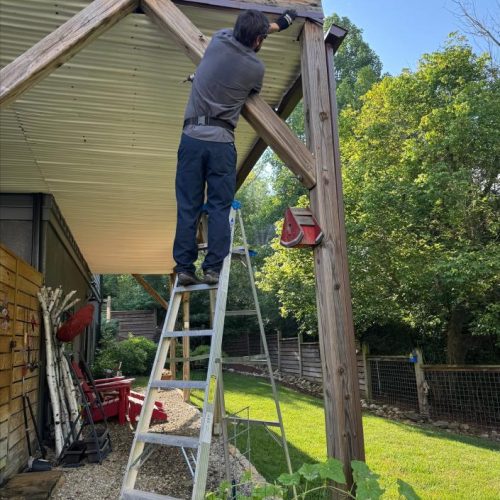As of August 1st in North Carolina, it is officially legal to evict bats from your home. If you’ve noticed unusual noises or signs of wildlife in your attic or crawl space, you could be dealing with a bat infestation—one of the most common nuisance wildlife problems in our area.
At Clegg’s Pest Control, we understand the challenges and risks that come with bats living inside your home. Our experienced wildlife control experts are ready to safely and humanely remove bats and help you prevent future invasions.

Why Is Bat Season Important?
Bats are nocturnal mammals that prefer to roost in dark, secluded places during the day. In homes, that typically means attics, garages, or even inside houseplants. Since bats often seek shelter in attics, they can quietly move in unnoticed during the warmer months, making summer and early fall peak bat season in North Carolina.
Many homeowners only become aware of bats when they hear fluttering or scratching noises in the attic or see bats flying out at dusk. This is a sign that bats have roosted in your home and could be raising a colony.
Understanding North Carolina’s Bat Eviction Laws: Why August 1st?
In North Carolina, bats are protected wildlife, and there are strict laws governing when they can be evicted from homes. From May 1 through July 31, wildlife control agents (WCAs) are prohibited from performing bat evictions and exclusions except under special circumstances approved by the North Carolina Wildlife Resources Commission (NCWRC).
Why the May to July Restriction?
- Female bats are caring for their flightless pups, who cannot leave the roost on their own.
- Eviction measures rely on adult bats’ ability to fly off and relocate to new roosts.
Because pups are unable to fly before August 1st, evicting bats before this date can lead to serious problems, including:
- Adult bats trying to access pups through living spaces: When adults cannot reach their pups in the attic or roosting area, they may seek alternative, often dangerous routes—such as entering your living space. This can increase human exposure to bats, raising health risks.
- Pups wandering into living spaces or dying inside walls: Hungry pups left behind may enter your home searching for food or die inside inaccessible spaces, causing odor problems and potential health hazards.
- Unnecessary lethal take of bat pups: Evictions during pup season can inadvertently kill pups, which is harmful to bat populations and against wildlife protection laws.
Exceptions
In rare cases involving urgent human health risks—such as bats actively entering living areas—WCAs may obtain special permission to conduct evictions between May and July. However, these are carefully considered and granted on a case-by-case basis by the NCWRC.

Signs You May Have Bats in Your Home
If you suspect bats in your attic or other dark spaces, here are some telltale signs to look for:
- Bat sightings: Seeing bats clinging upside down on attic rafters or flying out of vents or eaves at dusk.
- Noises: Fluttering, scratching, or rustling sounds coming from your attic, crawlspace, or walls.
- Bat droppings: Small, brown, pellet-like feces found scattered on the attic floor or near entry points. Be cautious — bat droppings can carry harmful bacteria and viruses.
- Damaged areas: Soffits or fascia boards pulled away or damaged, vents or screening displaced, providing entry points.
If you notice any of these, it’s time to call in the professionals.
Why You Shouldn’t Try to Remove Bats Yourself
While bats are beneficial animals that play a crucial role in controlling insect populations, they can pose serious health risks if they invade your home. Bats can carry diseases such as rabies and SARS, and their droppings (guano) may harbor fungi that cause histoplasmosis, a respiratory illness.
Attempting to remove bats without professional help can be dangerous. Bats may become agitated and bite, risking infection. Improper eviction methods can also harm bat populations, which are crucial to the environment.
How Clegg’s Can Help with Bat Removal and Prevention
At Clegg’s Termite & Pest Control, we have trained wildlife experts who specialize in humane bat removal. Here’s what we offer:
- Preliminary bat inspection: We assess your home for signs of bats and entry points.
- Safe bat eviction: Starting August 1st, our experts humanely remove bats currently roosting inside your home in compliance with state regulations.
- Preventative measures: We seal off entry points to prevent future bat invasions.
- Ongoing wildlife control: We also handle squirrels, snakes, raccoons, opossums, and other nuisance wildlife.
Our goal is to help you return to a pest-free home safely and efficiently.
Other Wildlife Problems? Clegg’s Has You Covered
Bats aren’t the only wildlife that might invade your home. Our residential wildlife control services also cover:
- Squirrels: Known to chew through siding, PVC pipes, and electrical wiring, posing fire hazards.
- Snakes: While most North Carolina snakes are harmless, some are venomous and a threat to pets and people.
- Raccoons, opossums, foxes, and more: We trap and exclude these animals safely.

Don’t Wait — Schedule Your Bat Removal Inspection Today!
Bat season is here, and with the August 1st legal eviction date now in effect, there’s no better time to address any bat problems before they get worse.
Protect your family’s health, avoid costly damage, and let the experts at Clegg’s Pest Control handle your bat removal needs. Contact us today to schedule your inspection and get peace of mind.
About Clegg’s Pest Control
With years of experience serving North Carolina homeowners and businesses, Clegg’s offers comprehensive pest and wildlife control programs tailored to your specific needs. Whether you have bats in the attic, squirrels in the walls, or other pest problems, Clegg’s is your trusted partner for safe and effective wildlife removal and exclusion.
CALL TODAY 888-672-5344
Email: info@cleggs.com
